In every corner of the Dungeons & Dragons multiverse, a quiet struggle simmers beneath the clash of swords and the whispered secrets of darkened taverns: the art of balancing combat and roleplay. Dungeon Masters everywhere know this tension—the pressure to deliver satisfying, pulse-pounding battles while also offering a rich tapestry of character, intrigue, and narrative. It’s a challenge, and it can shake even seasoned DMs to their storytelling core.
At first glance, combat and roleplay may seem like two entirely separate games jammed together for convenience’s sake. On one side, crisp grids, initiative trackers, and dice rolling through tense silences. On the other, gleaming dialogue, clever schemes, in-jokes, and the kind of character drama that gives a campaign its soul. Focusing too much on one risks alienating players who crave the other; a campaign riddled with endless combat grinds into monotony, while three hours of aimless conversation can leave the action-hungry restless.
Yet the real secret—one that takes years to fully appreciate—is that these two elements aren’t rivals at all. They’re partners in your table’s rhythm, the ebb and flow that keeps everyone invested. True mastery isn’t dividing your session into neat slices of “RP” and “Combat.” It’s about reading the mood, managing the pace, and weaving each session with enough intrigue, fear, humor, and adrenaline to keep every player engaged, whatever their flavor.
Managing that balance isn’t just a technical challenge. It’s about tone. The stakes of a boss fight mean nothing if the table feels disconnected, just as a heartfelt character confession lands flat if the narrative’s been lost to endless dice rolls. Your job is to orchestrate the energy, reading when the table needs a shot of action, or when it’s time to draw breath and let the heart of the story beat.
This article aims to put practical, achievable tools into your DM’s toolkit. Whether your players are bloodthirsty tacticians, improv-loving actors, or somewhere in between, these tips are designed to help you create sessions that are as satisfying to run as they are to play. Let’s dive into the eight core strategies for making every session sing with balance and engagement.
- Tip 1: Know Your Group’s Preferences
- Tip 2: Build Encounters with Story Purpose
- Tip 3: Use Roleplay to Set Up Combat
- Tip 4: Break Up Long Combats with Character Moments
- Tip 5: Use Downtime and Travel for Story Depth
- Tip 6: Control Session Pacing With Encounter Design
- Tip 7: Reward Roleplay with Mechanics
- Tip 8: Plan Session Beats, Not Just Events
- Final Thoughts on Balancing Combat and Roleplay
Tip 1: Know Your Group’s Preferences
Every table has its own language—quirks, interests, and unspoken lines in the sand. Ignoring what excites your group is like trying to cook a feast for mystery guests; you might strike gold, but chances are good you’ll serve up something unsatisfying. Figuring out what your players truly love is the keystone for every other tip in this article. Without it, even your cleverest encounter or most heartfelt NPC could fall flat.
Try my AI Tabletop RPG generators...and an extensive library of content!
Start before dice ever hit the table. Session zero is the DM’s treasure map: a chance to talk candidly about game expectations, boundaries, and dreams. Some groups hunger for tactical, high-stakes combat where every swing of the sword brings death or glory. Others thirst for narrative depth—emotional choices, tangled alliances, and character growth. Both? Neither? That’s your puzzle to solve.
But preferences aren’t static; they shift with the story and the passing weeks. Silent players might perk up when goblins burst through a window, while the jokester suddenly grows serious during a tense negotiation. Track those moments. Not every player will voice their desires—sometimes you’ll need to decipher body language, table chatter, and which plot threads get the most engagement.
Remember, you don’t need to solve the “perfect balance.” What matters most is showing you care. Continuous feedback closes the gap between your intentions and their excitement, ensuring every player is invested in the journey, not just the outcome.
10+ Ways to Assess Player Preferences:
- Host a session zero with open discussion about campaign tone and interests
- Distribute anonymous surveys (Google Forms or pen-and-paper) post-session
- Run spotlight scenes focusing individually on each character’s strengths
- Ask for “roses and thorns” (highlights and criticisms) at the end of sessions
- Observe which encounters elicit the most table chatter and excitement
- Track notes on who initiates roleplay or requests combat
- Watch for recurring player jokes or offhand wishes (“I wish we had more puzzles!”)
- Offer optional side quests geared toward different play styles
- Use verbal check-ins during breaks: “How’s everyone feeling about combat tonight?”
- Invite players to suggest NPCs, locations, or encounter types they want more of
- Examine how quickly players respond to in-character cues versus tactical strategy
- Let players write short character backstories indicating preferred game focus
When you know your table, you’re no longer guessing—you’re tailoring each session like a master chef with a custom menu. Engagement skyrockets, and players feel seen, reducing friction and surprises behind the screen.
⚔️ Fantasy RPG Random Tables Books
Make life as a Gamemaster easier…
If you play Dungeons & Dragons, Pathfinder, or other fantasy RPGs, this
RPG random tables series
is packed with encounters, NPCs, treasure, and more. Available in eBook or print—either way, you’ll have a wealth of adventure ideas at your fingertips.
Most importantly, this upfront investment means less stress for you later. Instead of dreading the mid-session yawn or restless side chats, you’ll know you’ve set the stage for everyone to have their moment in the spotlight.
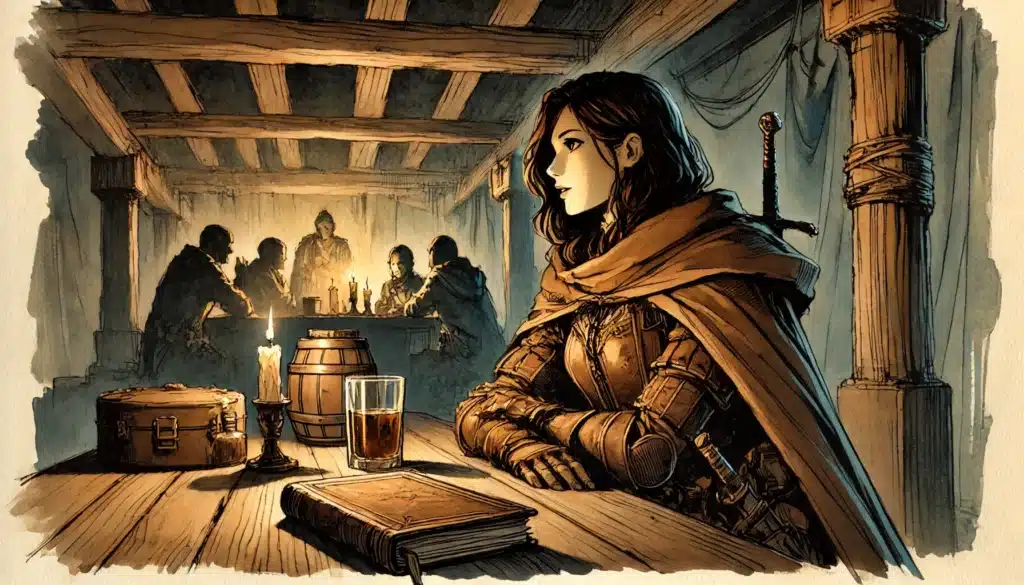
Tip 2: Build Encounters with Story Purpose
Combat should never feel like an awkward minigame tacked onto your narrative. When designed with story at their core, encounters become chapters in your epic, not speed bumps to tolerate on the way to the next village tavern. A battle without context is just math and dice—but a battle with stakes is unforgettable.
Ask yourself: why is this fight happening here, now? Is it tied to a player’s backstory, or challenging a moral boundary? Weave personal goals, story themes, or world lore directly into each enemy or environment. Even a random ambush can become meaningful if it ties into a greater scheme or offers a chance for a character to shine.
Stretch beyond just “win or die” objectives. Perhaps the party must save an innocent, argue over letting a villain live, or fight amidst an environment that amplifies the encounter’s emotional stakes. A crumbling bridge or a haunted battlefield speaks volumes—what the party chooses to do with those elements reveals who they are.
Don’t be afraid to get creative: not every fight needs to be lethal. Sometimes, sparring with a mentor, thwarting a ritual, or tangling with a rival adventurer’s ego offers more story depth and roleplay opportunity than a room full of goblins.
12+ Techniques for Framing Story-Driven Encounters:
- Tie a monster or faction to a PC’s backstory (revenge, redemption, family)
- Force a choice: save innocents or capture the villain as time runs out
- Set combat in a location rich with history or personal symbolism
- Interrupt crucial social scenes with a sudden attack for dramatic irony
- Make enemies that offer parley or surrender before/during battle
- Weave mysterious objectives or “unknown artifact” fights that fuel intrigue
- Use environmental hazards tied to campaign lore (e.g., the cursed cicada grove)
- Present a moral dilemma: foes are mind-controlled townsfolk or children
- Place an NPC ally in danger, forcing the party to split attention
- Start with a duel or private showdown rather than a group melee
- Frame the encounter as a dream or vision showcasing a PC’s fears
- Make weather or natural disasters central to combat choices
- Set up rival adventurers with mirrored goals for a tense “vs party” fight
- Include unique win conditions, like disabling a ritual or breaking a curse item
When encounter design is story-first, even unremarkable foes become memorable. Combat becomes less about raw tactics and more about character, choice, and consequence.
This approach keeps roleplay currents flowing during battle, allowing players to invest emotionally and carry those ripples into the next quiet moment or conversation.
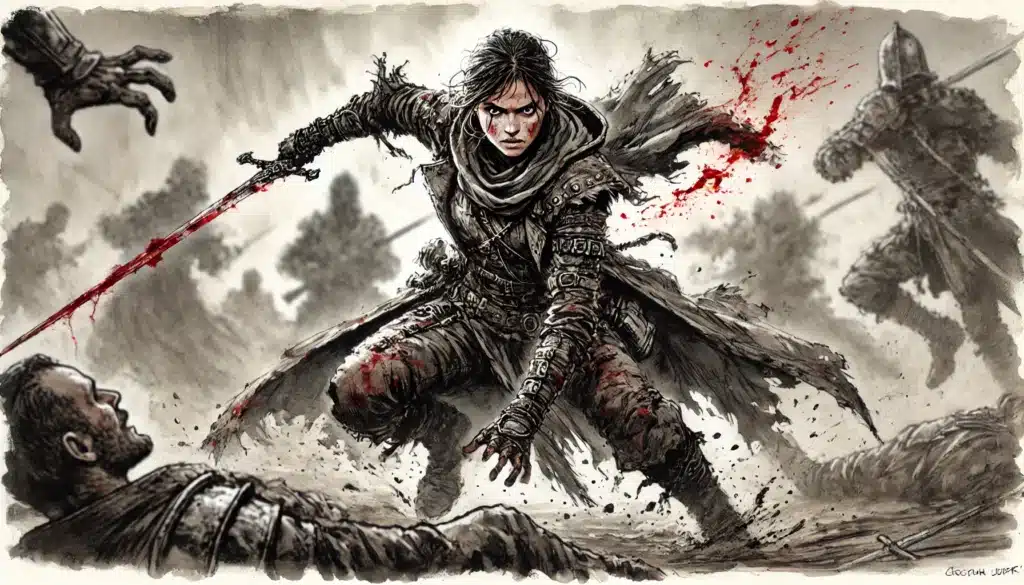
Tip 3: Use Roleplay to Set Up Combat
Nothing kills immersion faster than a fight that feels like it came out of nowhere. The best conflicts are woven from the threads of roleplay—arguments, secrets, alliances, or suspicion—ensuring combat arises naturally, rather than feeling forced.
Begin with tension. Perhaps an uneasy truce frays during a fraught negotiation, or the party’s lies don’t quite pass muster with the local crime lord. Maybe a ritual goes awry, letting a slumbering horror loose on the city, or personal disputes finally boil over. When characters drive the action, every spell cast and sword swing lands with more meaning.
Consider mystery and intrigue as fuel, not filler. Let clues unravel, alliances shift, and plans fail—when chaos erupts, the audience already knows what’s at stake. Even a tavern brawl means more when it’s the result of three sessions of festering rivalry.
When these transitions work, the mood shifts smoothly. Players remain in-character, improvising reactions based on recent events, rather than just slipping into tactical combat mode. This ensures every battle is an organic continuation, not an interruption.
10+ Dynamic Scenarios Where Roleplay Leads to Combat:
- Negotiations with a villain degenerate into violence over a broken promise
- Internal party argument evolves into a challenge or non-lethal duel
- Ritual sacrifice or summoning goes wrong, releasing antagonists into the scene
- Courtroom drama unravels into a sudden assassination attempt
- Town mob turns hostile after failed diplomacy, sparking a mass skirmish
- Allies from different factions clash over unresolved loyalty
- PC’s secret identity is revealed, causing a former friend to attack
- Misinformation or cursed objects sow confusion and cause breakdowns
- Tense dinner party devolves as poisoning attempts are uncovered
- Caught red-handed in a heist, guards rush in—alarms blaring
- Dream sequences spiral into psychic combat with subconscious foes
With natural transitions, the story keeps humming; players never experience the jarring sensation of whiplash between “talky bits” and “battle time.”
Beyond seamless flow, this method encourages players to remain alert; every roleplay scene could light the fuse that leads to their next big fight.
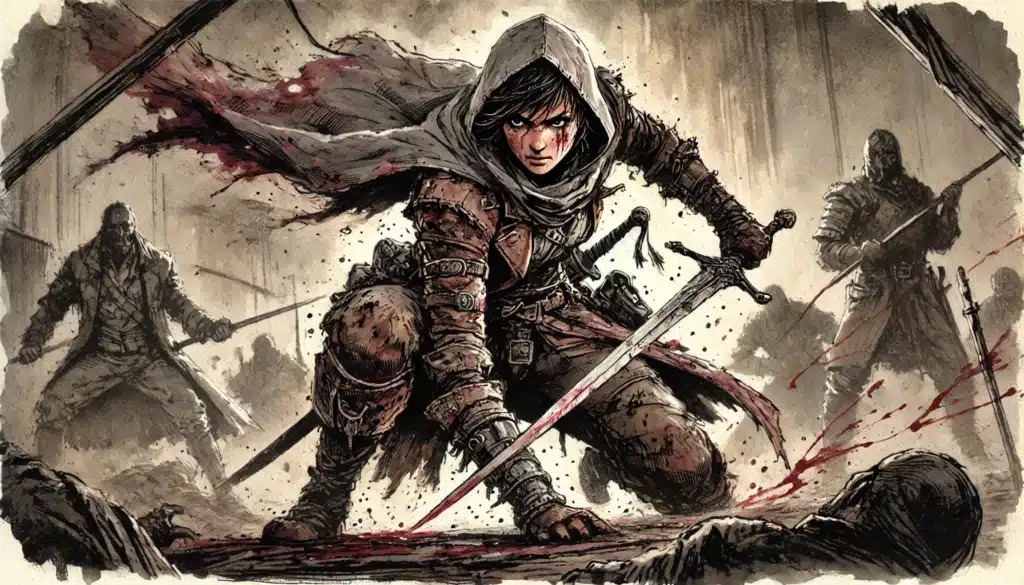
Tip 4: Break Up Long Combats with Character Moments
Combat is at its most gripping when it feels personal—when characters’ thoughts, fears, and quirks bubble up even as blades are drawn. Long, slogging battles can wear on attention spans, but weaving in brief, illuminating character beats transforms routine initiative into something electric.
Instead of waiting for combat to end before roleplaying, encourage short interludes or asides. Let a character’s mind drift to a childhood trauma when faced by a familiar foe. Have an NPC shout encouragement, or taunt with a secret only the bard knows. Allow mid-battle banter, inner monologues, or even reckless sacrifice—every round is a window for drama.
⚔️ Fantasy RPG Random Tables Books
Make life as a Gamemaster easier…
If you play Dungeons & Dragons, Pathfinder, or other fantasy RPGs, this
RPG random tables series
is packed with encounters, NPCs, treasure, and more. Available in eBook or print—either way, you’ll have a wealth of adventure ideas at your fingertips.
Consider the environment: flaming ruins might trigger a fire-phobic wizard’s hesitation; fighting atop a sacred monument could prompt memories or oaths. Spotlight each character’s quirks—what would they yell under pressure, or how might they react to an ally’s danger?
Don’t be afraid to pause the action for a moment of slow-motion drama. Give a character the room to finish a poignant one-liner, or let everyone witness the silent, trembling resolve before a make-or-break attack.
15+ Mid-Combat Character Moment Ideas:
- Flashback to a traumatic memory after a critical hit or injury
- Character monologues as they duel an old rival (“You never learned, brother…”)
- Fear of fire erupts when facing a dragon, causing hesitation
- Ally shouts secret encouragement that only one party member hears
- Paladin drops a vow or prayer before a killing blow
- NPCs jeer, cheer, or plead from the sidelines based on party actions
- Rogue cracks a joke mid-stab (“Well, you asked for it!”)
- Spell misfire triggers a moment of panic and quick thinking
- Barbarian loses control, revealing a new side to the party
- Healer debates whether to save themselves or risk it all for another
- Dramatic slow-motion as enemies are defeated in memorable style
- Quick in-character check-in (“You okay?” “Keep fighting!”)
- Antagonist recognizes and taunts a PC by past nickname
- Wizard’s spell visions offer glimpses of future consequences
- Mid-fight moral debate over whether to kill or spare a subdued foe
These moments let your players’ personalities shine even as dice clatter. Suddenly, every swing becomes a story beat, every spell a possible turning point in character arcs.
By prioritizing these flashes of humanity, you create sessions where the battles mean something far deeper than hit points lost or won.
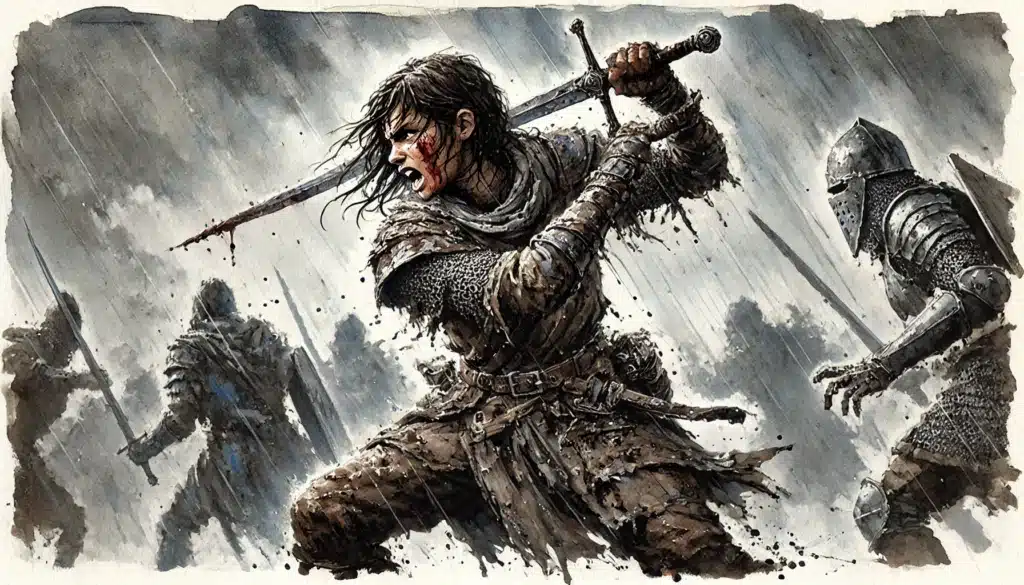
Tip 5: Use Downtime and Travel for Story Depth
The minutes and hours between adventures are fertile ground: moments of rest, fleeting conversation, private rituals, or stolen glances. Don’t skip straight from crisis to crisis—use downtime and travel as the connective tissue that makes the next combat matter more.
This is where the seeds of future drama are sown. Bonds are deepened at the campfire; old wounds surfaced during sleepless watches. Sometimes, a journey across a rainy wilderness says more about a character’s resolve than a dozen duels. Here, the weight of past choices finds space to breathe and settle.
Downtime offers room for dreams, ambitions, and vulnerability. Let PCs write letters home, debate philosophy, or share ghost stories that foreshadow what’s to come. Small moments—an anxious glance, a murmured hope—add depth and resonance that will pay off when the next threat rears its head.
Best of all, these narrative beats don’t require elaborate mechanics or heavy prep. Encourage players to initiate, but also have prompts ready to stoke the fire.
12+ Downtime or Travel Story Prompts:
- Strange or prophetic dreams spark suspicion or hope
- Letters from home carry news of distant troubles (or old flames)
- Bardic performances that retell the party’s exploits or hint at the future
- Philosophical fireside debates: “What does heroism mean?”
- NPC companions share tales, seeking advice or comfort
- Practice sessions or sparring reveal rivalries or new talents
- Festival, religious ritual, or holiday celebration deepens world lore
- PCs barter or haggle with merchants for unique, story-driven gear
- Reminiscing about lost or fallen allies around the fire
- Foraging or hunting scenes expose the local culture or hazards
- Socializing with travelers or refugees for rumors and plot hooks
- Secret training, crafting, or magical research sessions advance character goals
- Meditations, prayers, or personal rituals hinting at inner turmoil
Never underestimate the power of tiny, quiet scenes. They seem minor, but their impact can ripple across entire campaigns, anchoring player decisions in emotion rather than just utility.
A single sentence exchanged on a rainy road can carry more weight than a dozen fireballs—these small, human moments weave the heart of your campaign.
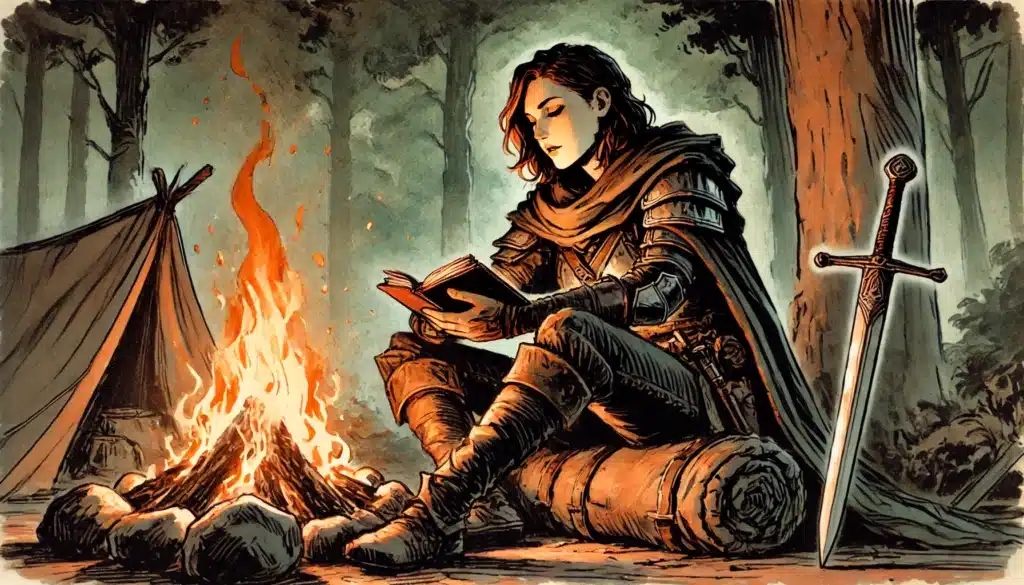
Tip 6: Control Session Pacing With Encounter Design
Even the most legendary campaigns can sputter without careful pacing. Two-hour slugfests might drain your table’s enthusiasm, while too many truncated squabbles leave the bloodthirsty in want. The secret isn’t more or less combat—it’s tuning each fight for dramatic effect and flow.
Mix up your encounters. A tense, five-round ambush following a day of travel can be just as thrilling—and far more memorable—as an hour-long dungeon crawl. Throw the party into a puzzle combat where brains, not just brawn, win the day. Introduce hazards or objectives that force the group to think and act fast.
Combat complexity also affects pacing. Skilled foes with layered tactics should be a rare treat, not every other room; sometimes, a mob of weaker enemies lets your heroes shine, while a single, dangerous enemy shifts the mood to survival horror.
Ultimately, learn to “read the table.” Don’t force a slugfest when players are hungry for story, but don’t let diplomacy drag on when the party is itching for action. Adapt on the fly, and always have a backup encounter ready if the mood shifts.
| Encounter Type | Approximate Time | Best Use |
|---|---|---|
| Ambush | 15 min | Shock Value, Quick Adrenaline |
| Skirmish | 20 min | Testing New Tactics |
| Mini-Boss Fight | 30 min | Mid-Session Challenge |
| Puzzle Combat | 25 min | Party Coordination |
| Mass Battle | 40 min | Epic Stakes, Climax |
| Chase Scene | 10 min | Break Tension, Spur Decisions |
| Social Combat | 15 min | Roleplay-Driven Conflict |
| Monster Hunt | 25 min | Resource Management |
| Environmental Hazard | 20 min | Change of Pace, Strategic Depth |
| Duel | 15 min | Spotlight Character Story |
By mixing encounter types and tuning duration, you fit more beats into a single session, keeping each segment fresh and energy high.
Clever session pacing means you never again end a night feeling like nothing happened. Every scene—combat or otherwise—pushes the story forward and keeps everyone coming back for more.
Tip 7: Reward Roleplay with Mechanics
Great roleplay should have real, tangible impact on the adventure. When DMs offer clear mechanical rewards for memorable character choices and in-character behavior, players lean harder into their alter egos, deepening both their own investment and the table’s shared story.
Integrating these rewards isn’t about “bribing” roleplay out of your group; it’s about making sure narrative choices feel purposeful. Give a moving speech? Offer Bardic Inspiration or advantage on the next check. Reveal a secret during downtime? Lower the DC for a tricky social encounter later, or slip a hidden clue into a dream.
Don’t wait for only “big moments.” Sometimes, an in-character joke or a clever scheme deserves a little love from the dice. The key is to reward player agency and risk-taking—not for parroting tropes, but for shaping the game world through authentic choices.
Ultimately, let the narrative and mechanics reinforce one another. When in doubt, ask: “Did that moment change the story?” If so, it probably warrants a reward.
12+ Mechanical Incentives for Roleplay:
- Award Inspiration for momentous character decisions or risk-taking
- Offer advantage after a moving in-character speech or plea
- Grant Bardic Inspiration for poetic or memorable storytelling
- Lower encounter DCs when a PC leverages background knowledge
- Allow re-rolls following vulnerable or risky character admissions
- Provide mechanical hints in dreams after journaling or meditation scenes
- Give temporary bonuses for resolving inner or party conflicts narratively
- Reveal hidden items or clues to PCs who ask the right in-character questions
- Allow “help” actions in combat based on clever roleplay, not just mechanics
- Unlock special feats or magic when a PC fulfills a major personal goal
- Let NPCs grant boons for thoughtful or creative social engagement
- Provide downtime benefits (e.g., faster recovery, better crafting) after meaningful RP
- Use custom “roleplay points” to be cashed in for minor narrative effects
When roleplay is woven into the rewards structure, every player has a reason to engage, no matter their initial comfort level with improv or acting.
The trick lies in moderation. Over-rewarding can unbalance your game, but neglecting roleplay leaves your table feeling mechanical and cold.
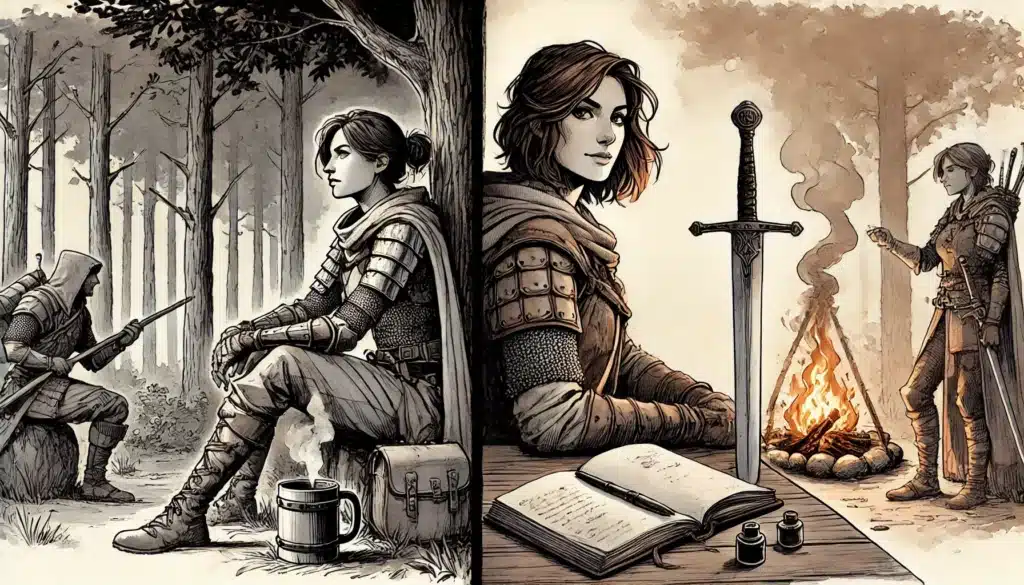
Tip 8: Plan Session Beats, Not Just Events
The most dynamic sessions aren’t rigid chains of plot points. Instead, they ebb and flow—between high-voltage action, mystery, revelation, and quiet connection. Think in session “beats”—emotional or narrative shifts, not just events on a checklist.
Start with a hook: an intrigue, a mystery, or even the whiff of betrayal. Use tension spikes (combat, social duels, threats) to maintain momentum, then let the pace fall for a moment of reflection, humor, or confession. Rotate between types of tension—brainstorm, brawl, bond—so nobody goes too long without engaging on their terms.
A table of narrative beats helps you prep for transitions, see where you might need to adjust on the fly, and ensure no one energy or theme dominates. It also leaves space for surprises—those unscripted moments of genius only real players can provide.
Try my AI Tabletop RPG generators...and an extensive library of content!
During prep, sketch out the emotional tunes you want to hit, not just where you want the party to end up. Even if plans change, you’ll have a framework to maintain flow.
⚔️ Fantasy RPG Random Tables Books
Make life as a Gamemaster easier…
If you play Dungeons & Dragons, Pathfinder, or other fantasy RPGs, this
RPG random tables series
is packed with encounters, NPCs, treasure, and more. Available in eBook or print—either way, you’ll have a wealth of adventure ideas at your fingertips.
| Beat Type | Example | Ideal Timing | Emotional Tone |
|---|---|---|---|
| Intrigue | Corrupt noble invites party | Start | Suspense |
| Light Humor | NPCs poke fun at party’s blunders | Start | Levity |
| Tension Spike | Ambush by rival mercenaries | Mid | Urgency |
| Revelation | PC uncovers hidden sibling | Mid | Shock/Sympathy |
| Bonding | Night of stories around the fire | Mid | Warmth |
| Major Combat | Slayer beast attacks the camp | End | Fear/Thrill |
| Dilemma | NPC betrays party for love | End | Bittersweet |
| Resolution | Group toasts to lost companion | End | Closure/Hope |
Session beats let you modulate tempo, shifting focus as needed to suit the mood, stakes, or pacing of play.
This method creates a campaign that feels organic. Story and action melt together, and even when your plans go off script, you can guide things smoothly between beats.
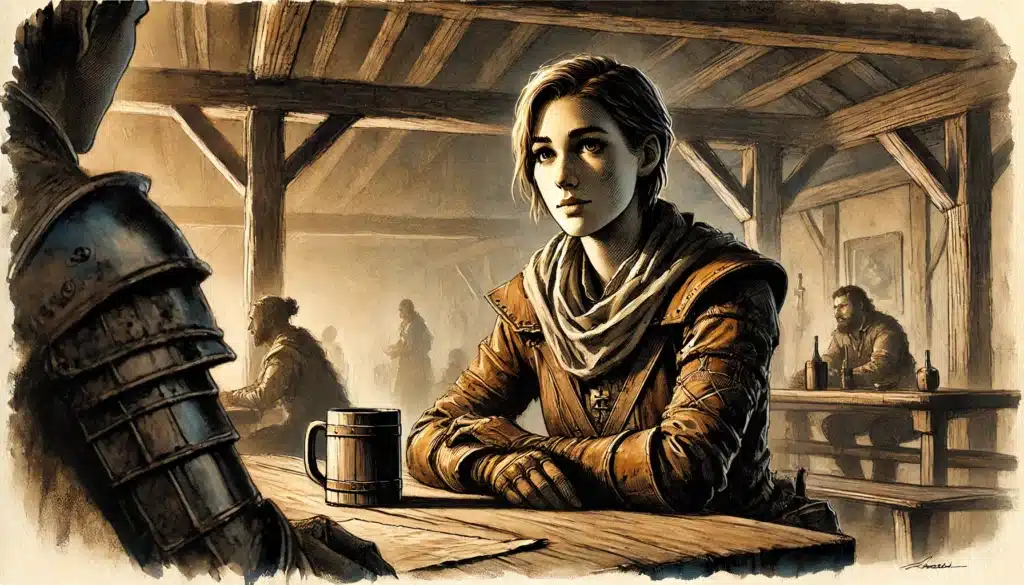
Final Thoughts on Balancing Combat and Roleplay
Balancing combat and roleplay isn’t a science—it’s an evolving dance, an exercise in adaptation, empathy, and intuition. The perfect blend doesn’t exist, because every table is as unique as the characters and players gathered around it. Sometimes the night demands steel and fire; sometimes, it calls for the soft resonance of confessions in the dark.
The most memorable games understand that balance isn’t a strict formula, but a living rhythm. One session might tip towards intrigue and debate, another towards duels and desperate stands. What matters is coherence: every moment, whether action or conversation, serves the evolving story and the lived experience of your players.
Don’t be afraid to experiment. Test new structures, vary the ratio, and listen—truly listen—to your players’ responses. When in doubt, ask yourself if the session feels right: Are they engaged? Are they talking about it days after? Did the story change because of their actions, both on and off the battlefield?
In the end, the best campaigns offer both the thrill of vanquishing a dragon and the aching tension of hard-won forgiveness. They give heroes the chance to change not just the world, but themselves.
So, as you map your next session, remember: what your players will cherish are not just victories, but the choices they made, the jaw-dropping twists, and those laughter-filled silences when story and action become one. That’s the magic of D&D—where every blade swing and whispered secret belong to a story that’s truly your own.



